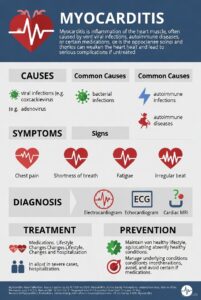Nursing management
- Nursing Assessment
- Subjective Data
- Important Health Information
- Past health history: Known duration and past workup of high BP; cardiovascular, cerebrovascular, renal, or thyroid disease; diabetes mellitus; pituitary disorders; obesity; dyslipidemia; menopause or hormone replacement status
- Medications: Use of any prescription or over-the-counter, illicit, or herbal drugs or products; previous use of antihypertensive drug therapy
- Functional Health Patterns
- Health perception–health management: Family history of hypertension or cardiovascular disease; tobacco use, alcohol use; sedentary lifestyle; health literacy; readiness for change
- Nutritional-metabolic: Usual salt and fat intake; weight gain or loss
- Elimination: Nocturia
- Activity-exercise: Fatigue; dyspnea on exertion, palpitations, exertional chest pain; intermittent claudication, muscle cramps; usual pattern and type of exercise
- Cognitive-perceptual: Dizziness; blurred vision; paresthesias
- Sexual-reproductive: Erectile dysfunction, decreased libido
- Coping–stress tolerance: Stressful life events
- Important Health Information
- Objective Data
- Cardiovascular
- SBP consistently >140 mm Hg or DBP >90 mm Hg for patients <60 yr old or >150 mm Hg or DBP >90 mm Hg for patients >60 years old.
- Orthostatic changes in BP and HR; bilateral BPs significantly different; abnormal heart sounds; laterally displaced apical pulse; diminished or absent peripheral pulses; carotid, renal, or femoral bruits; peripheral edema
- Gastrointestinal
- Obesity (BMI ≥30 kg/m2); abnormal waist-hip ratio
- Neurologic
- Mental status changes
- Cardiovascular
- Possible Diagnostic Findings
- Abnormal serum electrolytes (especially potassium)
- Increased BUN, creatinine, glucose, cholesterol, and triglyceride levels
- Proteinuria, albuminuria, microscopic hematuria
- Evidence of ischemic heart disease and left ventricular hypertrophy on ECG
- Evidence of structural heart disease and left ventricular hypertrophy on echocardiogram; evidence of arteriovenous nicking, retinal hemorrhages, and papilledema on funduscopic examination
- BP Measurement
- Take in both arms initially
- Proper size and placement of cuff
- Can use forearm if needed
- Document site
- Assess for orthostatic hypotension
- BP and HR supine, sitting, and standing
- Measure within 1 to 2 minutes of position change
- Positive if decrease of 20 mm Hg or more in SBP, decrease 10 mm Hg or more in DBP, or increased 20 beats/minute or more in heart rate
- Subjective Data




